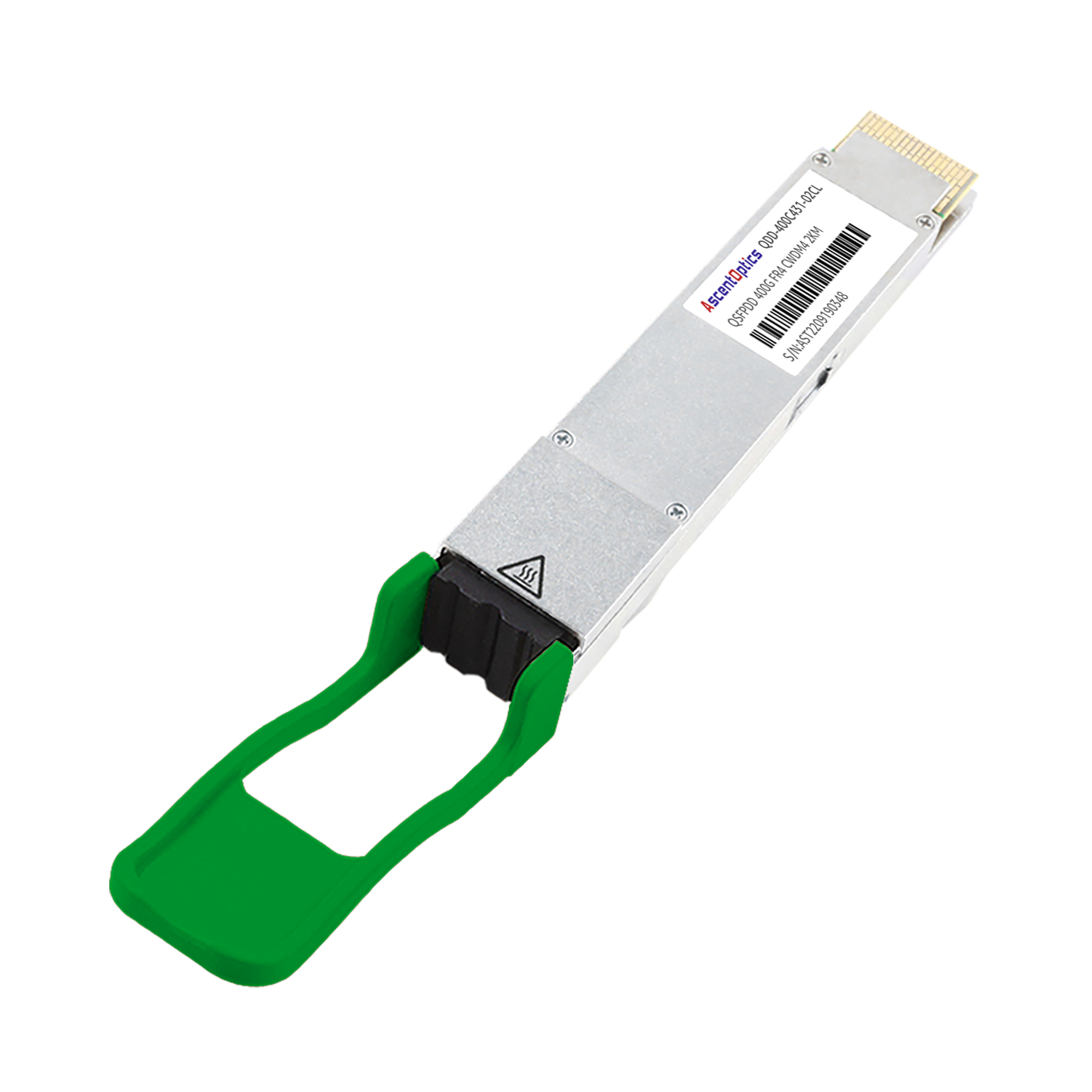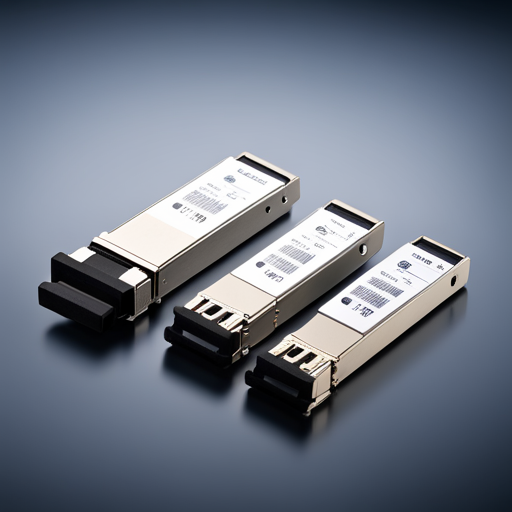Quad Small Form Factor Pluggable Double Density (QSFP-DD) transceivers are a revolutionary step forward in data center technology. These transceivers, supporting data rates of up to 400G, are designed to meet the burgeoning demand for higher bandwidth in data centers. The QSFP-DD design is configured in an eight-lane electrical interface, allowing it to keep pace with the increasing speed of networks and servers. By implementing Cisco 400G QSFP-DD optical transceivers, organizations can significantly optimize network performance, reduce latency, and enhance their data transmission capabilities.

Cisco 400G QSFP-DD Optical Transceivers are a testament to cutting-edge network technology, offering unrivaled data transmission speeds and performance. These high-capacity transceivers are a game-changer for data centers, bringing unparalleled speed and efficiency to data transfer processes. The 400G capacity of these QSFP-DD transceivers allows for a swift, seamless data flow, thus enhancing overall network productivity. Cisco’s 400G QSFP-DD Optical Transceivers are designed with an eight-lane electrical interface, further advancing the data transmission process, reducing latency, and meeting the rapidly evolving demand for increased bandwidth. Organizations can significantly enhance their network performance and data transmission capabilities by integrating these transceivers into their systems.
Cisco 400G QSFP-DD optical transceivers come with many features and benefits. They support modulation schemes like NRZ and PAM4, ensuring reliable, high-speed data transmission. Their high power efficiency results in lower overall power consumption, making them an eco-friendly choice for data centers. These transceivers also support backward compatibility with QSFP28 and QSFP56 transceivers, offering flexibility and protection for your investment.
Cisco 400G QSFP-DD optical transceivers support a broad range of module types, including SR8, DR4, FR4, and LR4. This support enables organizations to choose the most suitable module based on their distance requirements and budget constraints.
The data rates supported by Cisco 400G QSFP-DD optical transceivers range from 50G to 400G, providing versatility for different network requirements. With these data rates, organizations can easily handle large volumes of data, ensuring smooth, uninterrupted network operations.
Ideal for high-speed data center interconnects, Cisco 400G QSFP-DD optical transceivers can be used in various applications. These include data center interconnects, enterprise networking, high-frequency trading, and cloud computing. Furthermore, with their backward compatibility, they’re also suitable for gradual network upgrades, allowing organizations to transition to higher-speed networks without significant upfront costs.

The technical specifications of the Cisco 400G QSFP-DD optical transceivers provide a detailed snapshot of their capabilities, thereby enabling organizations to assess their suitability for specific applications.
The Cisco 400G QSFP-DD optical transceivers excel in visual performance. Depending on the specific module type, they support a wavelength range from 850nm to 1310nm. These transceivers also exhibit excellent optical power performance, with a maximum launch power of +2.0 dBm and a minimum launch power of -10.0 dBm. The receiver sensitivity ranges from -10.4 dBm to -13.6 dBm, providing high-quality signal reception. Furthermore, these transceivers maintain a high Extinction Ratio of around 3.5 dB, ensuring robust and reliable data transmission. With these optical parameters, Cisco 400G QSFP-DD optical transceivers provide the necessary visual performance to support high-speed data transmission, satisfying the most demanding data center requirements.
Cisco 400G QSFP-DD optical transceivers showcase impressive electrical performance, making them highly suitable for high-speed data center applications. Their operating power supply is typically 3.3V, ensuring compatibility with standard data center power supply systems. They also achieve low power dissipation, typically less than or equal to 10W for normal operation, contributing to energy efficiency in data center operations. The electrical interface employs an 8-lane configuration, supporting data rates up to 50 Gb/s per lane. With these electrical parameters, Cisco 400G QSFP-DD optical transceivers deliver dependable performance, contributing to efficient and reliable data transmission in data centers.
The Cisco 400G QSFP-DD optical transceivers are designed with advanced mechanical specifications to ensure seamless integration and robust performance within data center hardware configurations. These transceivers follow the QSFP-DD MSA form factor, ensuring compatibility across various networking equipment. The mechanical dimensions typically include a height of 18.35 mm, a width of 18.35 mm, and a depth of 89.6 mm, allowing them to fit comfortably into a standard QSFP-DD socket. The operating temperature range spans from 0°C to 70°C, ensuring reliable performance in various data center environments. With these mechanical specifications, Cisco 400G QSFP-DD optical transceivers demonstrate a perfect blend of compactness, versatility, and resilience, effectively meeting the mechanical requirements of modern data centers.

Cisco provides a range of 400G QSFP-DD optical transceivers to cater to different applications and distance requirements. Here’s a brief overview of the various types of transceivers:
The 400G QSFP-DD SR8 transceiver is ideal for short-range data center applications. It uses 8 parallel lanes of multimode fibers, each operating at 50G, for a cumulative 400G operation. With a distance reach of up to 100m on OM4 fiber, the SR8 is an excellent choice for close proximity data center interconnects.
The 400G QSFP-DD DR4 transceiver is designed for intermediate-distance applications. It employs 4 parallel lanes of single-mode fiber, each operating at 100G, for a total of 400G operation. The DR4 can transmit data up to 500m, making it suitable for medium-range data center interconnects.
The 400G QSFP-DD FR4 transceiver is built for long-reach applications. It uses 4 parallel lanes of single-mode fiber, each operating at 100G, for a 400G operation. With a maximum reach of 2km, the FR4 serves well in long-haul data center interconnects or campus networking.
The 400G QSFP-DD LR4 transceiver is designed for extra-long-reach applications. It utilizes 4 parallel lanes of single-mode fiber, each operating at 100G, for a combined 400G operation. Capable of transmitting data up to 10km, the LR4 is perfect for connecting data centers across different geographical locations.

Cisco’s 400G QSFP-DD optical transceivers are designed with interoperability in mind. They can interoperate with OSFP (Octal Small Form Factor Pluggable) transceivers, a similar 400G transceiver standard. This allows for seamless integration and flexible network configuration, especially in mixed hardware environments. It’s important to note, though, that while both QSFP-DD and OSFP support 400G data rates, their form factors differ, which may require respective hardware or adapters for interconnection.
CFP8 is another form factor for 400G transceivers, and Cisco’s 400G QSFP-DD optical transceivers can also interoperate with these. The ability of QSFP-DD to interoperate with CFP8 modules allows for diverse network setups and enhances scalability. Despite the interoperability, QSFP-DD and CFP8 have different form factors and power consumption profiles, so network designers should consider these factors when planning their network architecture.
Cisco’s 400G QSFP-DD optical transceivers are backward compatible with existing QSFP transceivers. This ensures network operators can gradually upgrade their networks from 100G to 400G without overhauling the existing infrastructure. The QSFP-DD module has an additional row of contacts that allow it to handle four times the data rate of QSFP, offering a smooth transition to higher bandwidths while safeguarding existing investments.

When deploying Cisco 400G QSFP-DD optical transceivers in data centers, the following considerations should be kept in mind:
Cisco 400G QSFP-DD optical transceivers cater to diverse visual networking requirements, with different variants targeted at different distances and applications. Depending on the deployment environment, choose the transceiver variant that best suits your distance and bandwidth requirements. For instance, the 400G QSFP-DD SR8 transceiver would be an ideal choice for short-range inter-datacenter connections.
Data centers typically require high-performance, reliable, and energy-efficient networking equipment. Cisco 400G QSFP-DD optical transceivers feature low power consumption and high data rates, making them well-suited for such environments. Additionally, they have interoperability with other transceiver standards like OSFP and CFP8 and backward compatibility with QSFP transceivers, ensuring seamless integration into the existing data center infrastructure.
For use cases where traffic needs to be broken out into smaller data flows, Cisco 400G QSFP-DD optical transceivers support breakout mode, where the data flow can be separated into multiple lower-speed connections. Conversely, for aggregation of numerous lower-speed links into one high-speed connection, these transceivers also support aggregation mode. This flexibility in handling different traffic patterns makes these transceivers an excellent choice for dynamic data center environments.
In conclusion, Cisco’s 400G QSFP-DD optical transceivers are a strategic solution that addresses the urgent need for increased bandwidth and efficiency in data centers. They offer a range of options to cater to various distance requirements, from short-range to extra-long-reach applications. Interoperability with other standards, such as OSFP and CFP8, and backward compatibility with QSFP make them a versatile option for diverse network architectures. The ability to support breakout and aggregation modes allows flexibility in managing different traffic patterns. Investing in 400G QSFP-DD optical transceivers is a forward-thinking move that ensures immediate network performance enhancement and future-proofs infrastructure against increasing data demands.

A: The Cisco 400G QSFP-DD Optical Transceivers are designed to provide high-speed, high-density optical connectivity for data center applications.
A: QSFP-DD stands for Quad Small Form-factor Pluggable Double Density. It is a form factor for optical transceivers that supports higher data rates and increased port density compared to traditional QSFP transceivers.
A: The Cisco 400G QSFP-DD series includes various types of optical transceivers, such as FR4, DR4, LR4, SR8, and XDR4.
A: The Cisco 400G QSFP-DD FR4 transceiver supports a maximum distance of 2km over single-mode fiber (SMF).
A: Active optical cables (AOC) are complete optical modules with integrated transmitters and receivers designed for direct connection between switches, servers, and storage devices. On the other hand, breakout cables are used to split the QSFP-DD port into multiple duplex LC connectors.
A: The Cisco 400G QSFP-DD transceivers are backward compatible with QSFP and QSFP+ ports, allowing for seamless integration with existing optical networks.
A: The Cisco 400G QSFP-DD transceivers have a compact form factor that enables high-density deployments in data centers.
A: The Cisco 400G QSFP-DD transceivers require single-mode fiber (SMF) cable for long-distance transmissions. It is essential to ensure the correct type of cable is used to achieve optimal performance.
A: PAM4 (Pulse Amplitude Modulation 4-level) is a modulation scheme allowing higher data rates and increased bandwidth efficiency compared to traditional NRZ (Non-Return to Zero) encoding. It is essential for 400G Ethernet as it enables the transmission of multiple bits per symbol, maximizing the data capacity of the optical transceivers.
A: The demand for 400G Ethernet is proliferating due to the increasing need for higher bandwidth and faster data transmission in data center environments. As more applications and services require large amounts of data to be processed and transferred, the demand for 400G Ethernet solutions continues to rise.
Recommend Reading: 400G QSFP56-DD for sale